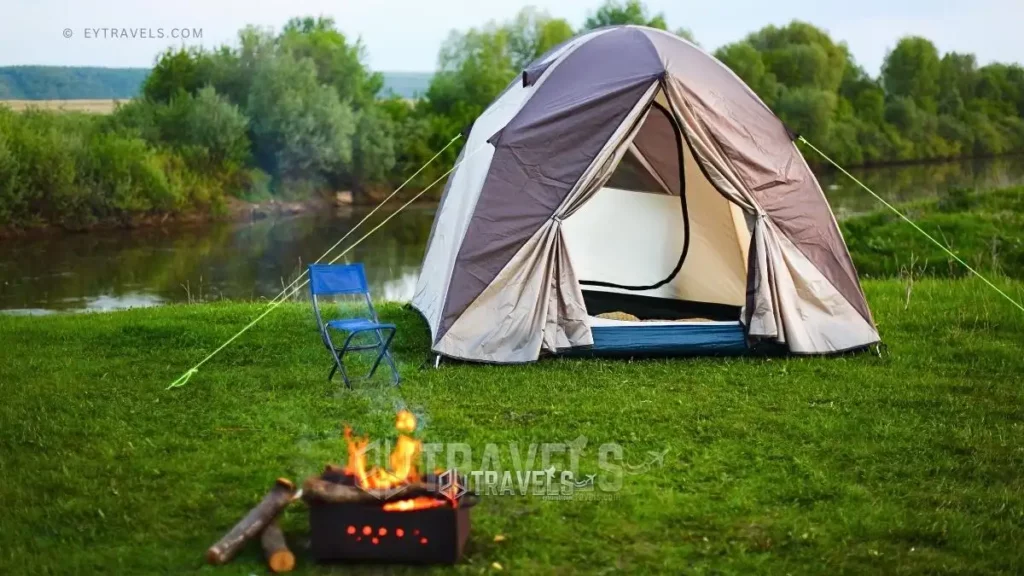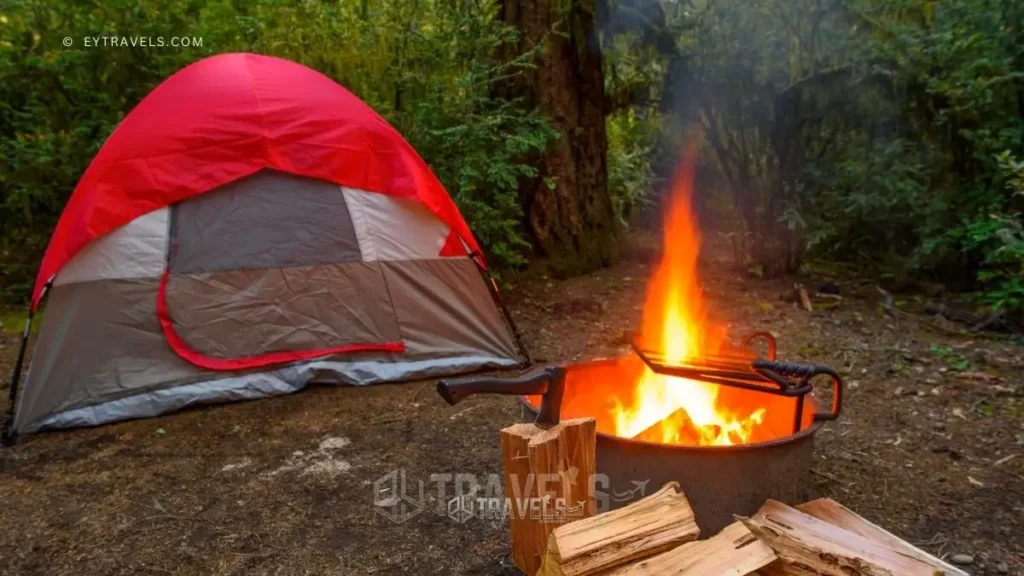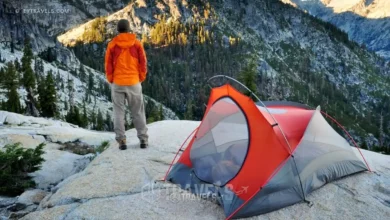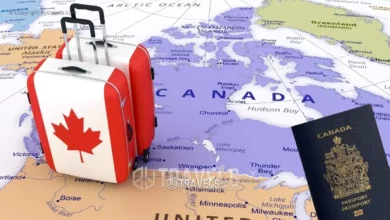What is Dispersed Camping? Unleash Your Inner Explore
From Tent to Tranquility: Why Dispersed Camping is a Must-Try Experience!
Have you ever dreamed of escaping the hustle and bustle of city life and immersing yourself in the peaceful serenity of nature? If so, then dispersed camping might just be your ticket to a truly unforgettable adventure. But what is dispersed camping, you ask?
Well, imagine pitching your tent in the middle of nowhere, surrounded by towering trees and breathtaking landscapes, with no designated campsites or reservations required. It's like having your very own private slice of paradise. In this article, we'll dive deep into the world of dispersed camping and uncover all its hidden gems.
When it comes to camping, most people think of booking a campsite in a designated campground, surrounded by other campers. But have you ever wondered about camping outside of these developed areas? That's where dispersed camping comes in.
Table Of Contents
- What is dispersed camping?
- How does dispersed camping differ from traditional camping?
- Why do people choose dispersed camping?
- How can I find dispersed campsites?
- What are the dispersed camping rules and regulations?
- How should I select a dispersed camping area or camping site?
- What are the key principles of Leave No Trace in dispersed campsite?
- FAQs on What is Dispersed Camping
- Q: What is dispersed camping?
- Q: What are the camping rules for dispersed camping?
- Q: How can I find areas for dispersed camping?
- Q: What should I do with toilet paper when dispersed camping?
- Q: Can I camp anywhere in national parks?
- Q: What is the difference between dispersed camping and camping in designated campgrounds?
- Q: Are there any specific rules for camping in national forests?
- Q: What are the benefits of dispersed camping?
- Q: Can I have a campfire while dispersed camping?
- Q: What are the advantages of trying dispersed camping?
What is dispersed camping?
Dispersed camping refers to camping outside of designated campgrounds on public lands such as national forests or Bureau of Land Management (BLM) areas. It allows campers to set up camp in undeveloped areas, exploring untouched landscapes and enjoying a more secluded camping experience.
Definition of dispersed camping

Dispersed camping is camping outside of developed recreation areas, where camping is allowed but does not offer the same amenities as traditional campgrounds. It involves finding a suitable campsite on public lands and setting up your own camping setup.
How does dispersed camping differ from traditional camping?
The main difference between dispersed camping and traditional camping is the level of amenities and infrastructure. Traditional campgrounds have designated campsites, picnic tables, fire rings, and restroom facilities. Dispersed camping, on the other hand, is more primitive and usually lacks these amenities. Campers need to be self-sufficient and bring their own supplies.
Why do people choose dispersed camping?
People choose dispersed camping for various reasons. Some campers seek solitude and a connection with nature that is often missing in crowded campgrounds. Dispersed camping allows them to camp in remote areas, away from the noise and commotion of other campers. Others enjoy the challenge of self-sufficiency, relying on their camping skills to set up a campsite in the wilderness.
How can I find dispersed campsites?
Finding dispersed campsites can be a bit of an adventure, but there are several resources to help you locate the perfect spot.
Where can I find information about dispersed camping sites?

The Forest Service and BLM websites provide information on dispersed camping regulations and locations. These websites typically have maps, guidelines, and contact information to help you plan your trip.
Are there any websites or apps that can help me find dispersed campsites?
Yes, there are websites and apps dedicated to helping campers find dispersed camping sites. Websites like Freecampsites.net and Campendium.com provide user-generated content on free camping locations, including dispersed campsites.
What are the best resources for finding dispersed camping sites?
While there are several resources available, the best way to find dispersed camping sites is to consult official websites of national forests and BLM lands. These websites provide accurate and up-to-date information on camping regulations and available campsites.
What are the dispersed camping rules and regulations?
Before embarking on a dispersed camping trip, it's important to familiarize yourself with the rules and regulations in the area you plan to visit.
What are the general rules for dispersed camping?
The general rules for dispersed camping include camping outside of developed recreation areas, staying for a limited period (typically 14 days), and leaving no trace behind. Campers should set up their campsites on bare soil, at least 100 feet away from any water source, and pack out all trash.
What are the camping restrictions in national forests and public lands?
Camping regulations vary between national forests and public lands, so it's essential to check the specific rules and restrictions of the area you plan to camp in. Some areas may have additional restrictions on campfires, camping seasons, and group camping.
What are the specific rules for campfires and fire restrictions in dispersed camping areas?
Fire restrictions are common in dispersed camping areas, especially during times of high fire danger. Campers should check for any fire restrictions and follow the guidelines regarding campfires. In some areas, campfires may be prohibited or allowed only in designated fire rings.
How should I select a dispersed camping area or camping site?
Choosing the right dispersed camping site is crucial for a successful camping trip. Consider the following factors when selecting a campsite:
What factors should I consider when choosing a dispersed campsite?
When choosing a dispersed campsite, consider factors such as accessibility, privacy, proximity to water sources, and natural beauty. Look for a level and sheltered spot where you can pitch your tent or park your camper.
What are the advantages and disadvantages of camping in established campgrounds versus dispersed camping sites?
Established campgrounds offer amenities and facilities, making them convenient for campers who prefer a more structured camping experience. Dispersed camping, on the other hand, provides more privacy and a chance to connect with nature. However, it lacks amenities and may require you to be more self-sufficient.
How far away should I camp from water sources?
It is important to camp at least 100 feet away from any water source, including rivers, lakes, and streams. This helps protect the water source from contamination and prevents soil erosion.
What are the key principles of Leave No Trace in dispersed campsite?
Leave No Trace is an important principle that campers should follow, especially in dispersed camping. It focuses on minimizing the impact on the environment and preserving the natural beauty of the camping areas.
What is Leave No Trace and why is it important in dispersed camping?
Leave No Trace is a set of principles that encourages campers to minimize their impact on the environment. It promotes responsible camping practices to preserve the integrity of natural areas and protect wildlife habitats.
What are some practical tips for practicing Leave No Trace in dispersed camping?
Some practical tips for practicing Leave No Trace in dispersed camping include packing out all trash, burying human waste at least 6-8 inches deep and 200 feet away from any water source, using existing fire rings or fire pans, and minimizing campsite alterations.
How can I minimize my impact on the environment while dispersed camping?
To minimize your impact on the environment while dispersed camping, avoid damaging vegetation, stay on established trails, dispose of greywater properly, and use biodegradable cleaning products. Remember, the goal is to leave the campsite as you found it or even better.
FAQs on What is Dispersed Camping
Q: What is dispersed camping?
A: Dispersed camping refers to camping outside of designated campgrounds or campsites. It allows campers to set up camp in areas within national forests or other public lands where camping is allowed.
Q: What are the camping rules for dispersed camping?
A: The camping rules for dispersed camping vary depending on the location and land management agency. However, some general rules include camping at least 200 feet away from water sources, observing campfire restrictions, and practicing leave-no-trace principles.
Q: How can I find areas for dispersed camping?
A: To find areas for dispersed camping, you can visit the websites of national forests or contact the forest service. They provide information on locations where dispersed camping is allowed and any specific regulations or limitations.
Q: What should I do with toilet paper when dispersed camping?
A: When dispersed camping, it is important to dispose of toilet paper properly. This means either packing it out with your trash or burying it in a 6-inch deep hole at least 200 feet away from water sources.
Q: Can I camp anywhere in national parks?
A: No, dispersed camping is not allowed in national parks. National parks usually have designated camping areas or campgrounds where camping is permitted.
Q: What is the difference between dispersed camping and camping in designated campgrounds?
A: Dispersed camping allows campers to set up camp in more remote and less developed areas, such as national forests, where there may be no designated campsites or facilities. Camping in designated campgrounds, on the other hand, typically provides designated campsites with amenities such as toilets, picnic tables, and fire rings.
Q: Are there any specific rules for camping in national forests?
A: Yes, each national forest may have its own specific rules and regulations for dispersed camping. It is important to check with the forest service or relevant authorities for the specific rules that apply to the national forest you plan to camp in.
Q: What are the benefits of dispersed camping?
A: Dispersed camping offers a more secluded and immersive outdoor experience. It allows you to explore and camp in remote areas, away from the crowds often found in campgrounds. It can also be a more cost-effective option, as many dispersed camping areas are free.
Q: Can I have a campfire while dispersed camping?
A: Campfire regulations may vary depending on the specific location and land management agency. Some areas allow campfires, while others may have restrictions or prohibit them altogether. It is important to check the current regulations for the area you plan to camp in.
Q: What are the advantages of trying dispersed camping?
A: Trying dispersed camping allows you to experience the beauty and serenity of nature in a more intimate way. It gives you the freedom to choose your campsite and create your own camping experience. It can also be a great way to discover lesser-known areas and enjoy the peace and quiet of the outdoors.






